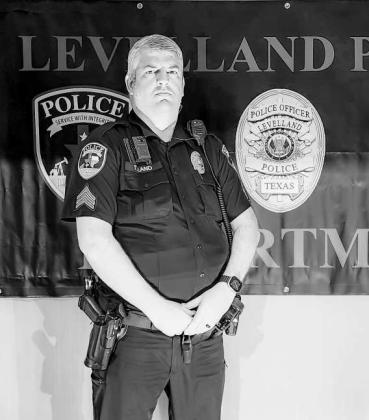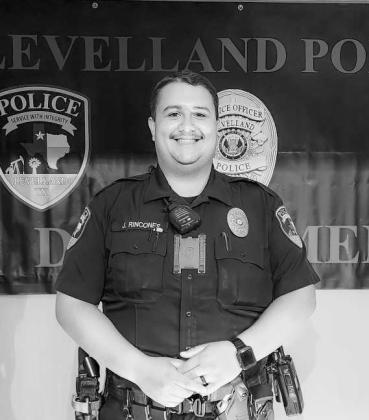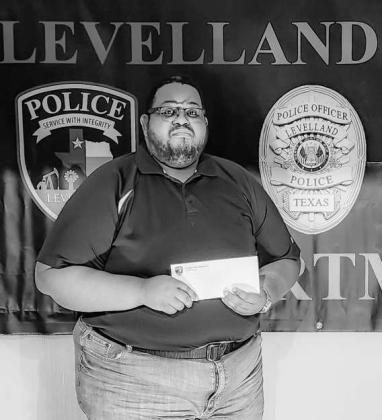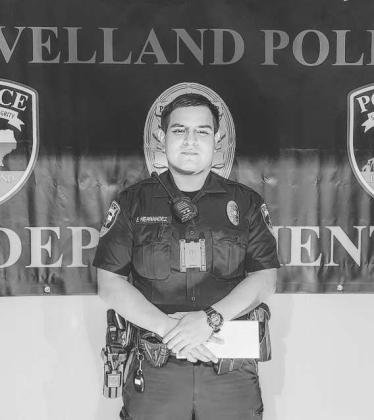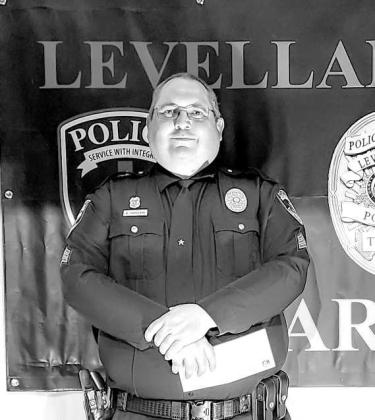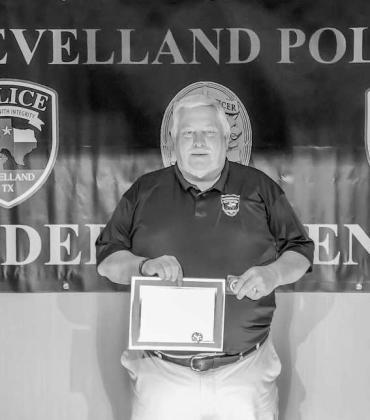Community members of Hockley County are continued to be reminded that a FEMA Disaster Recovery Center has opened as of June 24 at the Civic Center located at 1900 McKinley at the Levelland City Park.
Hours of operation will be from 7 a.m. to 7 p.m. until July 12.
Alongside FEMA, the American Red Cross and U.S. Small Business Administration (SBA), additional information has been included since the last time the article has run as South Plains Community Action will be at the recovery center. Additionally, the South Plains Association of Governments (SPAG)has announced loan options for businesses.
All centers are accessible to people with disabilities or access and functional needs and are equipped with assistive technology. If you need a reasonable accommodation or sign language interpreter, please call 833-285-7448 (press 2 for Spanish).
Texans do not have to visit a Disaster Recovery Center to apply for FEMA assistance. To apply, homeowners and renters can: Go online to disasterassistance.gov; Download the FEMA App for mobile devices; and Call the FEMA helpline at 800-621-3362 between 6 a.m. and 10 p.m. Help is available in most languages. If you use a relay service, such as video relay (VRS), captioned telephone or other service, give FEMA your number for that service.
Deadline to apply is July 16. Things needed to be brought will be two forms of ID if possible, FEMA registration number and paper work if individuals have already registered and insurance paperwork relevant to damages and needs if possible.
If any individuals were previously declined, they may still be able to receive some assistance. Individuals are encouraged to visit with FEMA representative to find more information. The FEMA phone number is 800-621-3362.
In addition to FEMA being at the center, the U.S. Small Business Administration (SBA) will also be present to offer consultation and assistance.
Under SBA’s Physical Disaster Business Loan program, assistance is available through low-interest long term loans to businesses of all sizes, small agricultural cooperatives and most private, non-profit organizations of all sizes to repair or replace disaster-damaged property owned by the business, including real estate, inventories, supplies, machinery and equipment.
Businesses of any size are eligible. Under SBA’s Economic Injury Disaster Loan program (EIDLS) are working capital loans to help small businesses, small agricultural cooperatives and most private, non-profit organizations of all sizes meet their ordinary and necessary financial obligations that cannot be met as a direct result of the disaster. These loans are intended to assist through the disaster recovery period. EIDL assistance is available only to entities and their owners who cannot provide for their own recovery from nongovernment sources, as determined by the U.S. Small Business Administration (SBA).
“Private nonprofit organizations should contact the Texas Division of Emergency Management Recovery Division by emailing TDEMPARecovery@tdem.texas.gov to obtain information about applicant briefings,” said Francisco Sánchez Jr., associate administrator for the Office of Disaster Recovery and Resilience at the Small Business Administration. “At the briefings, private nonprofit representatives will need to provide information about their organization,” continued Sánchez.
The Federal Emergency Management Agency will use that information to determine if the private nonprofit provides an “essential governmental service” and is a “critical facility” as defined by law. FEMA may provide the private nonprofit with a Public Assistance grant for their eligible costs. SBA encourages all private nonprofit organizations to apply with SBA for disaster loan assistance.
SBA may lend private nonprofits up to $2 million to repair or replace damaged or destroyed real estate, machinery and equipment, inventory and other business assets. SBA can also lend additional funds to help with the cost of improvements to protect, prevent or minimize disaster damage from occurring in the future.
For certain private nonprofit organizations of any size, SBA also offers Economic Injury Disaster Loans to help meet working capital needs caused by the disaster. Economic Injury Disaster Loans may be used to pay fixed debts, payroll, accounts payable and other bills that cannot be paid because of the disaster’s impact. Economic injury assistance is available regardless of whether the private nonprofit suffered any property damage.
The interest rate is 3.25 percent with terms up to 30 years. The deadline to apply for property damage is July 22, 2024. The deadline to apply for economic injury is Feb. 24, 2025.
Interest does not begin to accrue until 12 months from the date of the first disaster loan disbursement. SBA disaster loan repayment begins 12 months from the date of the first disbursement.
Applicants may apply online and receive additional disaster assistance information at SBA.gov/disaster. Applicants may also call SBA’s Customer Service Center at (800) 659-2955 or email disastercustomerservice@sba.gov for more information on SBA disaster assistance. For people who are deaf, hard of hearing, or have a speech disability, please dial 7-1-1 to access telecommunications relay services.
If an individual lives in a declared disaster area and have experienced damage to their home or personal property, they may be eligible for financial assistance from SBA — even if they do not own a business. As a homeowner, renter, or personal property owner, they may apply to SBA for a loan to help recover from a disaster.
Homeowners may apply for up to $500,000 to replace or repair their primary residence. Renters and homeowners may borrow up to $100,000 to replace or repair personal property — such as clothing, furniture, cars, and appliances — damaged or destroyed in a disaster.
Secondary homes or vacation properties are not eligible for these loans. However, qualified rental properties may be eligible for assistance under SBA’s business physical disaster loan program. These loans cover disaster losses not fully covered by insurance or other sources. Proceeds from insurance coverage on home or property may be deducted from the eligible loan amount.
Individuals may not use the funds to upgrade homes or make additions, unless required by the local building code. They may be eligible for up to a 20% loan amount increase above the real estate damage, as verified by SBA, for improvements that will help prevent risk of future property damage. SBA can refinance all or part of a previous mortgage in some cases, when the applicant does not have credit available elsewhere and has suffered substantial disaster damage.
The first payment is deferred for 12 months with no interest accrual for the first 12 months. For applicants unable to obtain credit elsewhere the interest rate will not exceed 4% and the SBA will determine whether an applicant can obtain credit elsewhere. Maturity is up to 30 years and there is no pre-payment penalty or fees.
Collateral is required to the extent possible for physical damage loans over $25,000 in presidential declarations and $14,000 in agency declarations. Real estate is the preferred form of collateral, even if the equity is insufficient to secure the full loan amount. SBA will ask the applicant for available collateral, but will not decline a loan for lack of collateral.
SPAG will also be available to assist with revolving loan funds which have been made available for counties affected by the recent storms including: Hockley, Cochran, Crosby, Bailey, Dickens, Floyd, Garxa, Hale, King, Lamb, Lubbock, Lynn, Motley, Terry and Yoakum.
Eligible use of funds include working capital, machinery, equipment and building or land. Fixed interest for the life of the loan can be as low as four percent as rates are determined by the RLF Board. Terms are tied to useful life of assets and there is no pre-pay penalty. One-third is a SPAG-RLF loan and two-thirds are other funds such as private lender, equity or other. One job must be created or retained for every $65,000 borrowed. There is a one percent of the origination fee at time of closing. The U.S. Economic Development Administration awarded SPAG a grant to establish this program.
South Plains Community Action is also in attendance to offer resources.
The Hockley County Endowment is still collecting donations for the Levelland Storm Recovery Relief Fund to support those impacted by last month’s severe storms. HCE is partnering with Love Levelland and other local nonprofits to identify the most urgent needs. To contribute to the Levelland Storm Recovery Relief Fund, please visit hockleycountyendowment.org or mail a check to the Community Foundation of West Texas, 6102 82nd Street, 8b; Lubbock, TX 79424, with “Levelland Storm Recovery Relief Fund” noted on the memo line.

